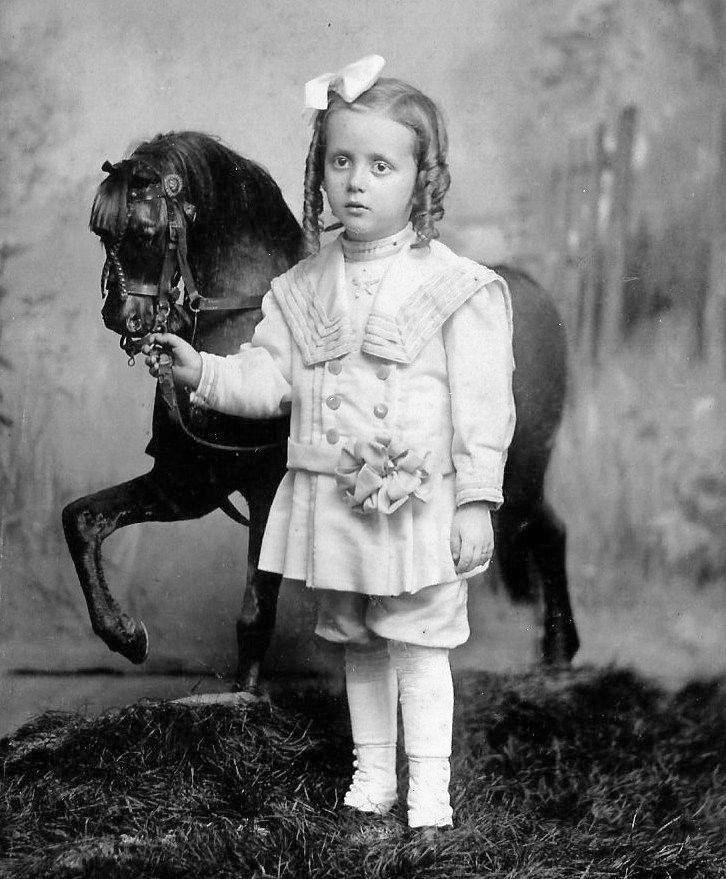
Hair Bows Worn by American Children: Chronology--The 20th Century

Figure 1.-- Here we see an unidentified boy about 4 years ols with a white hair bow, a lkittle larger than we often see on boys. He is not described as a boy, but the horse prop, side hair prt abd tunic suit mean that the child is a boy. The cabinet card portrait is undated, but the mount suggests it was taken in the early-1900s. The studio is Strunk in Reading, Pennsylvania.
|
|
We continue to see a few American boys wearing hair bows into the very early-20th century. This generally conincides with the Fauntleroy craze. This often did not necesarily mean boys wearing Fautleroy suits. In fact we see more examples with boys wearing sailor suits and other outfirs and after the turn-of the 20th century, tunic suit. What most of the examples we have found have in common is long hair. And in America at the time this almost always meant ringlet curls. These curls are strongly associated with the Fauntleroy era, but this did not mean that they were always worn with Fauntleroy suits. This was primarilky the 1900s and to a lesser extent the 1910s. There was a notable change in clothing in the 1910s even before Woeld War I, but it was especially notable with the War. .
The same dynamic was at play in Europe. Some how the realities of the War berought many fashion excentrictioes into perspective. Fauntlerioy suits, lace collars, abd ringlet curls for boys suddenly seemed inappropriate in real life. The Fauntleroy Craze had largely passed and see see far fewer boys wearing dresses. The War just accelerated trends already underway. Many of the hairbows we still see are with boys wearing dressy tunics, often white tunics, meaning white hair bows. The number of portraits we see with boys wearing hairbows declined, but we still see a few boys with hairbows. A good example is an unidentified little boy photographed with his big brother, both wearing dressy white tunics. This is one of the last images we have found with a boy wearing a large hair bow. After the early-1900s we rarely see boys with hairbows even the younger boys still with curls. After World War I (1914-18) in the 1920s we no longer see boys with hairbows, except for infants.
HBC

Navigate the Boys' Historical Clothing hair bow pages:
[Return toMain American boys' hair bow chronology page]
[Return toMain American boys' hair bow page]
[Return to Main boys' hair bow page]
[American boys]
[Belgian boys]
[French boys]
[Swedish boys]
[Long hair]
[Ringlet curls]
[Bangs]
[Main hair style page]
Navigate related Boys' Historical Clothing Web Site pages:
[Main style page]
[Hair styles]
[Collar bows]
[Dresses]
[Kilt suits]
[Kilts]
[Fauntleroy suits]
[Fauntleroy dresses]
[Sailor dresses]
[Pinafores]
[Smocks]
[French postcards]
[French catalogs]
Navigate the Boys' Historical Clothing Web Site:
[Introduction]
[Activities]
[Biographies]
[Chronology]
[Clothing styles]
[Countries]
[Bibliographies]
[Contributions]
[FAQs]
[Glossary]
[Images]
[Links]
[Registration]
[Tools]
[Boys' Clothing Home]
Created: 3:31 AM 10/3/2018
Last updated: 3:31 AM 10/3/2018



